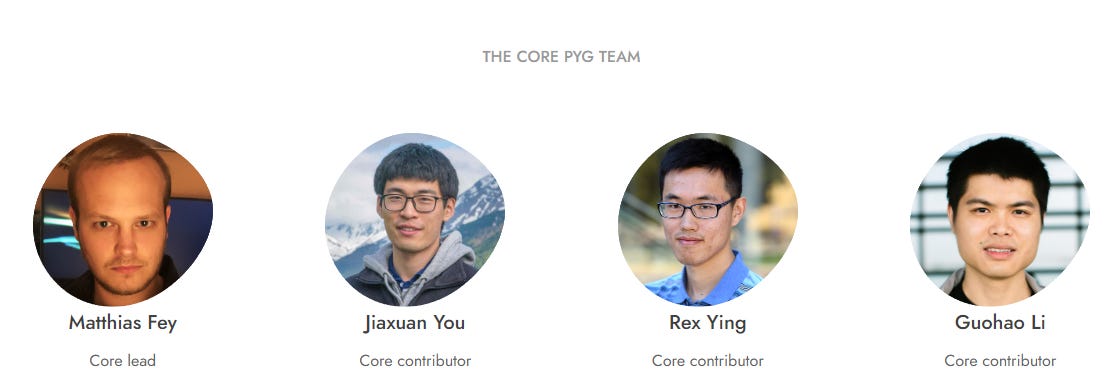What is PyG?
PyG (PyTorch Geometric) is a library built upon PyTorch to easily write and train Graph Neural Networks (GNNs)

Hey Guys,
You have stumbled on Graph Neural Networks somehow and now you’re interested in using it to solve a problem?
Here is an Email resource page on this. This is not a sponsored post, but I wanted to really highlight what’s going on here that’s relevant to the future of graph neural networks and how they may become more mainstream.
PyG (PyTorch Geometric) is a library built upon PyTorch to easily write and train Graph Neural Networks (GNNs) for a wide range of applications related to structured data.
The Latest release PyG 2.1.0 Graph is out!
PyG is the most popular library for Graph Machine Learning. The new functionality includes principled aggregations, link-level and temporal samplers, data pipe support, and many more features!
www.pyg.org
PyG is a library built upon PyTorch to easily write and train Graph Neural Networks for a wide range of applications related to structured data.
PyG is both friendly to machine learning researchers and first-time users of machine learning toolkits.
It consists of various methods for deep learning on graphs and other irregular structures, also known as geometric deep learning, from a variety of published papers.
In addition, it consists of easy-to-use mini-batch loaders for operating on many small and single giant graphs, multi GPU-support, DataPipe support, distributed graph learning via Quiver, a large number of common benchmark datasets (based on simple interfaces to create your own), the GraphGym experiment manager, and helpful transforms, both for learning on arbitrary graphs as well as on 3D meshes or point clouds. Click here to join our Slack community!
PyG utilizes a tensor-centric API and keeps design principles close to vanilla PyTorch. If you are already familiar with PyTorch, utilizing PyG is straightforward.
Spend less time worrying about the low-level mechanics of implementing and working with Graph Neural Networks. All it takes is 10-20 lines of code to get started training a custom GNN model.
PyG covers a large number of state-of-the-art GNN architectures and training and scalability procedures, and can easily be extended to fit your specific use-case or conduct your own GNN research.
The new GraphGym API in PyG can help users easily reproduce GNN experiments, launching and analyzing thousands of GNN experiments, and registering customized modules to the GNN learning pipeline.
And as well:
Check out the PYG documentation here.
PyG is a library built upon PyTorch to easily write and train Graph Neural Networks for a wide range of applications related to structured data. PyG is both friendly to machine learning researchers and first-time users of machine learning toolkits.
At its core, PyG provides the following main features:
See the Discussions on PyG on GitHub here.
The 2.0 update was in September, 2021.
Now just 11 months later we have 2.1.0
Latest release PyG 2.1.0 is out! The new functionality includes principled aggregations, link-level and temporal samplers, data pipe support, and many more features!
There’s over 2,000 people on the Slack channel. The team appears to have a major Stanford connection. PyG is available for Python 3.7 to Python 3.10.
I believe some of the founders of PyG are also involved in Kumo.AI. The backbone of the founding engineering team at Kumo.AI is from Stanford.
Some of us believe graph neutral networks could become more important. In brief, a Graph neural network is a class of artificial neural networks for processing data that can be represented as graphs.
According to Wikipedia, in the more general subject of "Geometric Deep Learning", existing neural network architectures can be interpreted as GNNs operating on suitably defined graphs.
Thanks for reading!
If you want to support the channel and allow me to continue to write Newsletters feel free to get access to more content.










